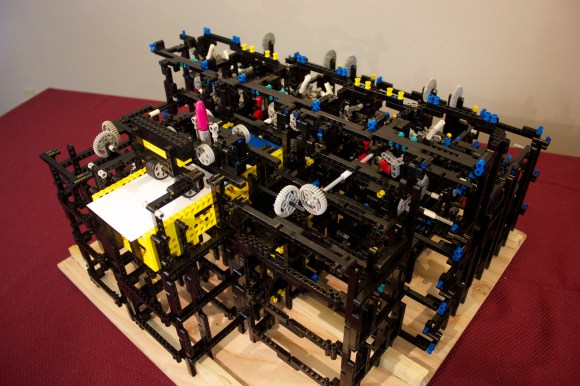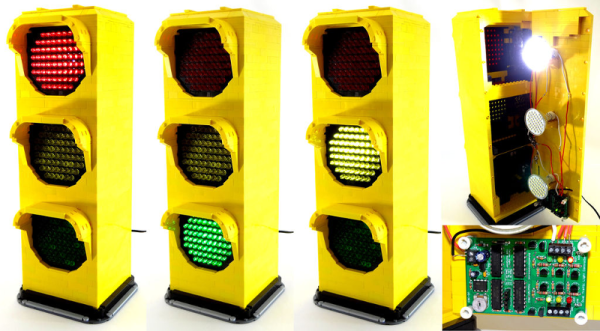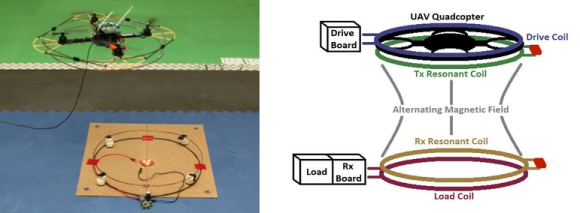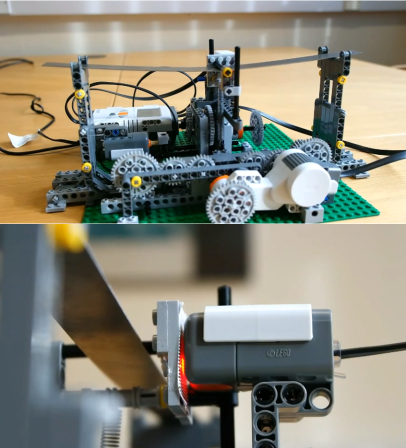
There are a number of elaborate Lego creations out there, but you probably haven’t seen something quite like [Andrew Carol’s] Lego drawing machine. He drew inspiration from the film Hugo and from automata of the 1800’s, specifically [Jaquet-Droz]’s Draughtsman, which we featured in a Retrotechtacular article not too long ago.
[Andrew’s] hand-cranked creation is divided into three components: a plotter, an “encoded pen stroke program”—which stores messages in links of pieces—and a reader that translates the links into pen strokes. The plotter moves the pen in the Y axis and moves the paper in the X to mark on the page, and also has a simple lift mechanism that temporarily raises the pen on the Z axis to interrupt pen strokes between letters (or drawings).
[Andrew] describes the chain reader by comparing it to a film projector, feeding the message through the mechanism. Although you won’t find a detailed how-to guide explaining the devices’ inner-workings on his site, there are some clues describing basic components and a couple of videos, both of which are embedded below.





 [Roballoba] decided to
[Roballoba] decided to  Learning with visuals can be very helpful. Learning with models made from NXT Mindstorms is just plain awesome, as [Rdsprm] demonstrates with this
Learning with visuals can be very helpful. Learning with models made from NXT Mindstorms is just plain awesome, as [Rdsprm] demonstrates with this 







